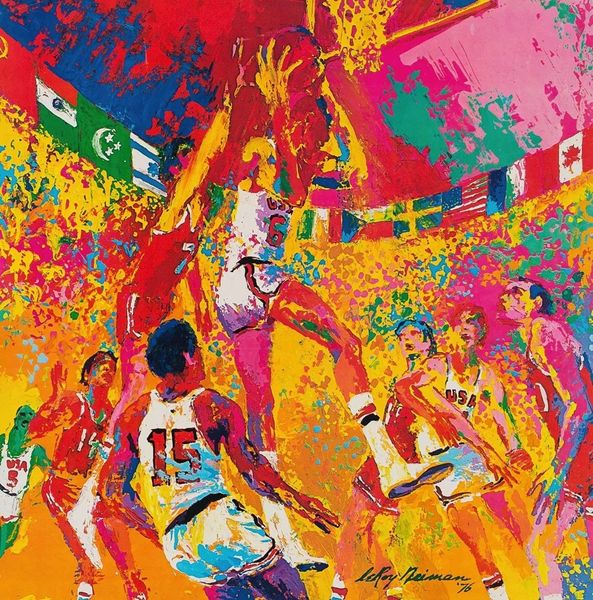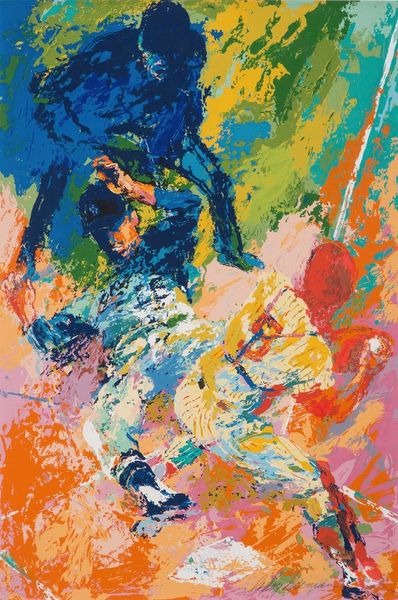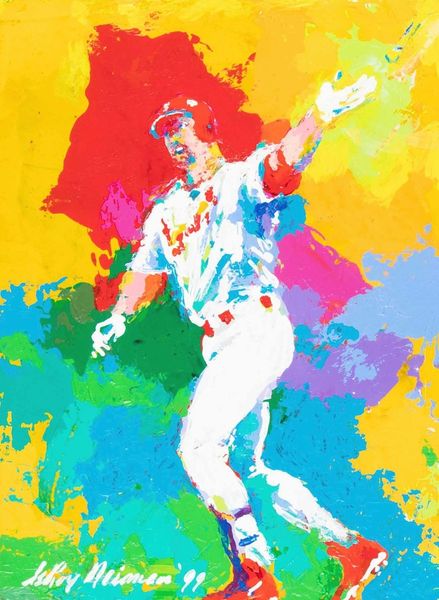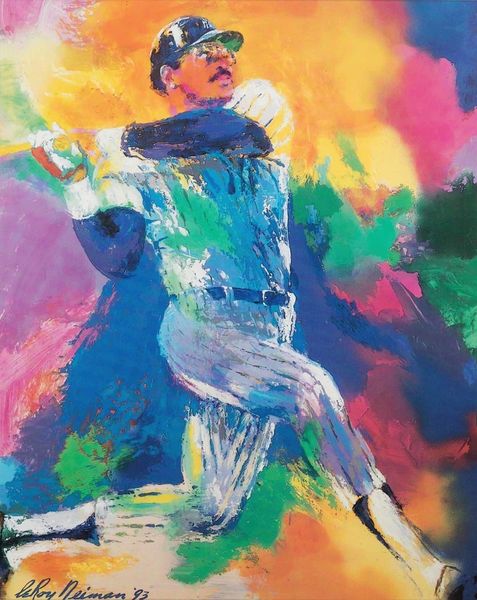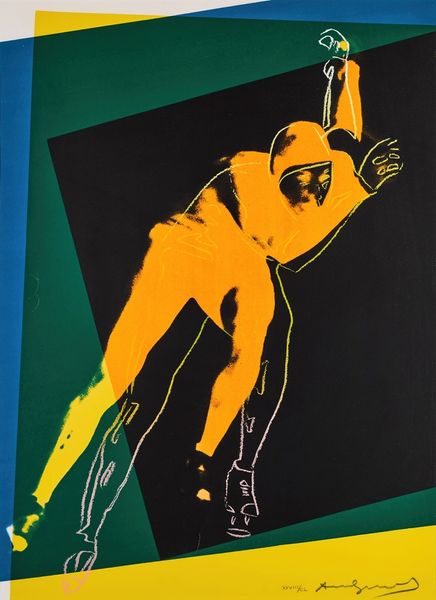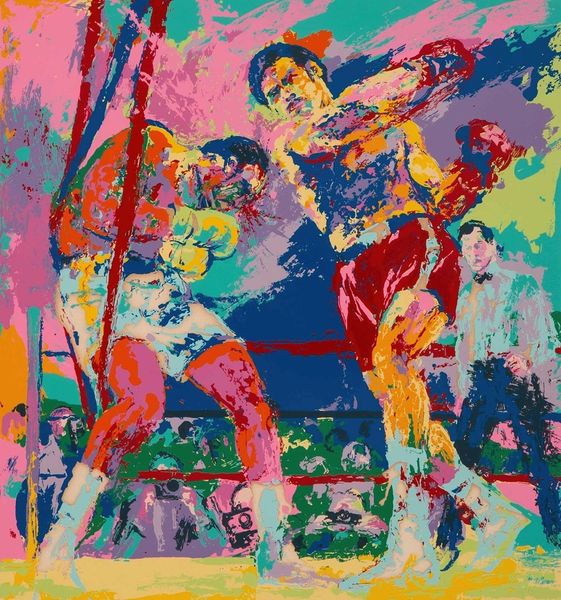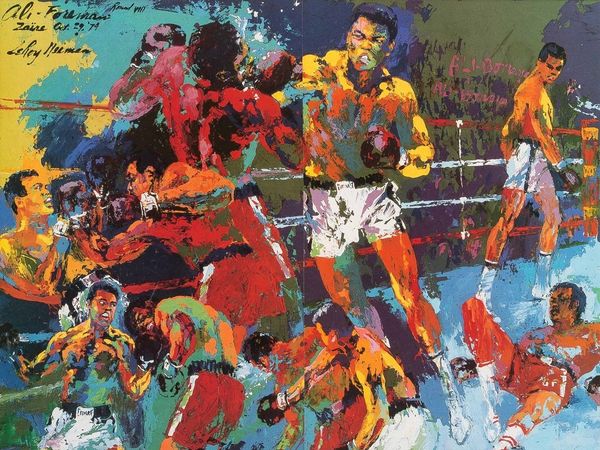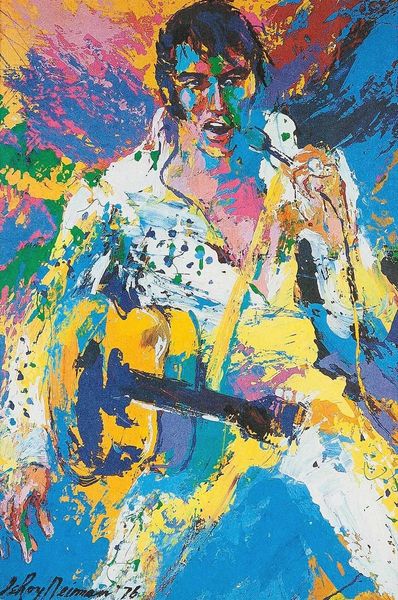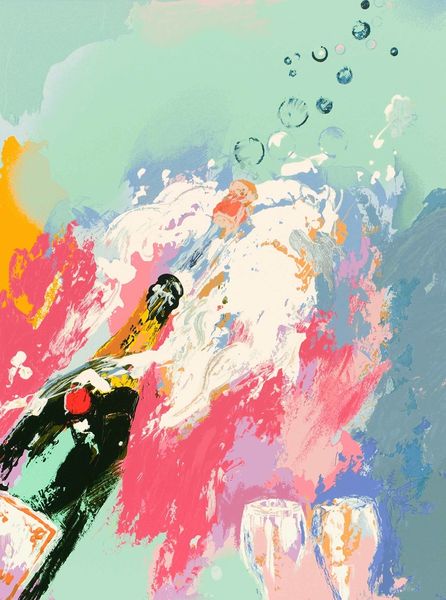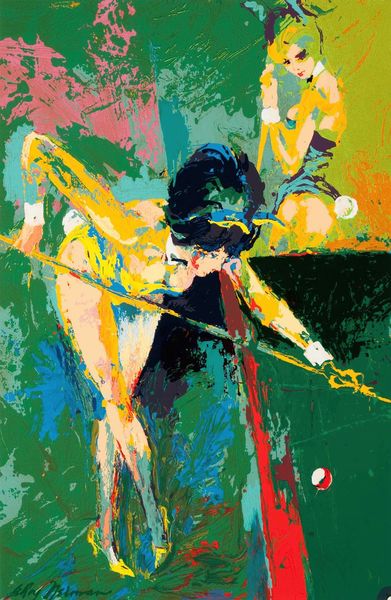
Copyright: Modern Artists: Artvee
Curator: Looking at this dynamic artwork by LeRoy Neiman from 1973, simply titled "Nate Thurmond," the energy just leaps off the canvas. Editor: The yellow immediately grabs your attention. And those thick strokes of acrylic paint—you can practically feel the physicality of the game itself. It’s pure impasto, a real celebration of materiality. Curator: Exactly. Neiman captures not just the image of Thurmond, but also something of his power, his cultural significance, and the larger-than-life status of sports icons within the social fabric of the 1970s. He moves with confidence despite being constantly heckled, discriminated against, and villainized in the media as many of his black teammates in sports have faced. The neo-expressionist handling reminds us that it is not just basketball at stake. Editor: And the quickness of application, with that limited color palette over that background... it is evocative of how the spectacle becomes this larger than life image. This artwork captures this specific subject matter that in itself becomes a social spectacle that gains significance over time. Curator: I find it interesting that the artist chose such vibrant tones juxtaposed with almost crude forms, as though reality itself cannot contain such displays of excellence or triumph when considering who we celebrate as icons, what bodies we choose to exalt. It poses questions of performativity as political statement. Editor: Right, there's this raw quality that makes you think about production. What kind of brush did he use? How quickly did he apply those colors to achieve this feeling? And how were these celebrated athletes commodified as celebrities, emblems, brands. Curator: It also reminds me of a time when athletes such as Thurmond and other Black players were actively transforming sports and culture by simply competing. Through their play, labor, excellence on the court they were taking a stance about civil rights, freedom of expression and so much more. Editor: It really makes you think about how the art itself operates as a means of production for immortalizing the performance of the athletic body and what it means to create, exhibit, consume art. Curator: I'm drawn to how this artwork makes visible both an athlete and a very specific historical moment, both its material circumstances as well as the social politics it encapsulates. Editor: It has definitely expanded my sense of materiality and production—the context of both the game and the work itself.
Comments
No comments
Be the first to comment and join the conversation on the ultimate creative platform.
